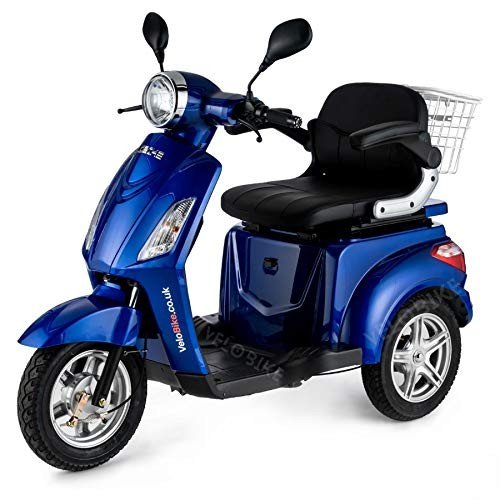10 Unquestionable Reasons People Hate Mobility Scooters

Mobility Scooters: A Comprehensive Guide
Mobility scooters have ended up being an essential mode of transportation for numerous people dealing with mobility obstacles. This short article explores the various aspects of mobility scooters, including their types, benefits, functions, and a guide for potential purchasers.
Comprehending Mobility Scooters
Mobility scooters are electrically powered gadgets developed for people with restricted mobility. mouse click the up coming article provide a method of transportation for individuals who might have problem walking but still desire to keep their self-reliance. They are available in numerous designs and functions to accommodate a vast array of needs.
Types of Mobility Scooters
Mobility scooters can generally be classified into three primary types:
| Type | Description | Best For |
|---|---|---|
| Compact Scooters | These are small and lightweight, ideal for inside and short trips. | Users with restricted storage area or those who take a trip often. |
| Mid-size Scooters | A balance between mobility and stability, appropriate for both indoor and outdoor use. | Those who need to cover a range of terrains. |
| Durable Scooters | Big and robust, created for rugged outside use and heavier individuals. | Users requiring additional weight capability or going off-road. |
Secret Features of Mobility Scooters
The option of mobility scooter typically depends on the features that align with specific requirements. Here are a few of the key features to consider:
- Weight Capacity: Mobility scooters feature various weight limitations. It is vital to select a scooter that can adequately support the user's weight.
- Variety: The range a scooter can travel on a single charge varies. Depending on user needs, one may opt for scooters with a variety of up to 40 miles.
- Speed: Most mobility scooters can reach speeds between 4 to 8 miles per hour. Consider what speed is comfy and safe for the designated environment.
- Turning Radius: A compact turning radius is essential for indoor use, enabling easier navigation in tight areas.
- Battery Type: The kind of batteries utilized can affect the scooter's efficiency. Lead-acid and lithium-ion batteries are the most typical.
Benefits of Using Mobility Scooters
The benefits of mobility scooters extend beyond just transport. Some key advantages include:
- Independence: Users can navigate their environment without depending on caretakers, promoting independence and self-confidence.
- Health Benefits: Using a scooter can encourage outside activity, resulting in physical and psychological health improvements by lowering sensations of isolation.
- Convenience: Scooters can quickly be operated in different environments, whether inside, in shopping center, or outdoors.
Crucial Considerations When Buying a Mobility Scooter
When buying a mobility scooter, numerous considerations can assist make sure that you choose the ideal model:
Assess Individual Needs:
- Mobility level: Consider how much support the individual will require.
- Range of use: Determine where the scooter will mostly be used (indoors, outdoors, on rough terrains, etc).
Test Drive:
- Always test drive numerous designs to find an ideal fit. Take notice of comfort, ease of steering, and the scooter's responsiveness.
Evaluation Safety Features:
- Look for scooters with appropriate security features like lights, indicators, and anti-tip styles.
Check Warranty and Service Options:
- A reputable warranty and readily available service options are essential for long-lasting use.
FAQs about Mobility Scooters
1. How fast do mobility scooters go?Mobility scooters normally have speeds ranging from 4 to 8 miles per hour, with many developed for safety instead of high-speed travel. 2. Are there weight constraints on mobility scooters?Yes, mobility
scooters feature particular weight limitations, frequently varying from
250 lbs to over 500 pounds, depending upon the design. 3. Can mobility scooters be used indoors?Certain designs, particularly compact scooters, are particularly designed for
indoor usage and are simpler to steer in tight spaces. 4. How typically do the batteries require to be replaced?Battery life can differ based on usage, however usually, with correct care, batteries may last in between 1 to 3 years before needing replacement
. 5. Are mobility scooters covered by insurance?Coverage can differ, however some insurance strategies, consisting of Medicare and Medicaid, might cover part of the expense. It's suggested to consult individual insurance companies. Mobility scooters serve as a
important tool for many individuals, allowing them to keep
their freedom and independence. By understanding the different types and functions of mobility scooters, people can make informed choices tailored to their particular requirements.
Whether used for errands, socializing, or leisurely activities, mobility scooters can boost the quality of life for those with mobility restrictions. Buying a mobility scooter is a decision that can significantly affect an individual's every day life. Therefore, individuals need to thoroughly examine their options and choose a model that best lines up with their lifestyle and mobility requirements
.

